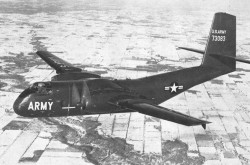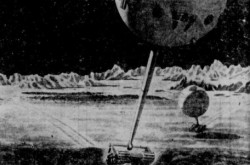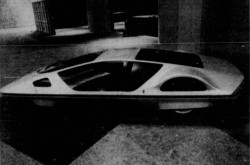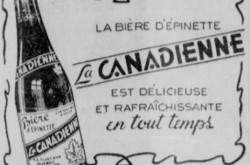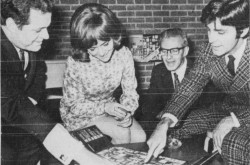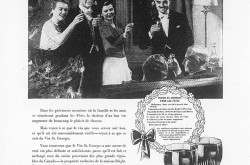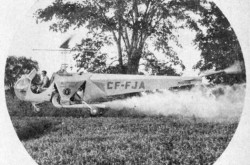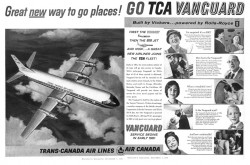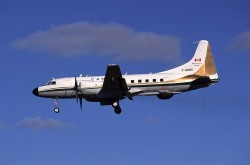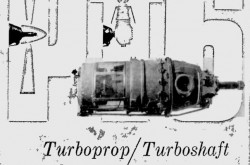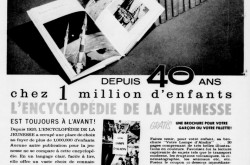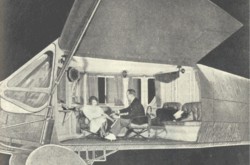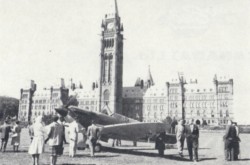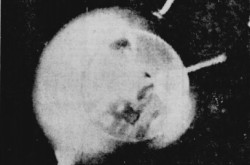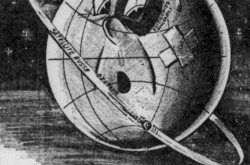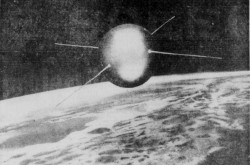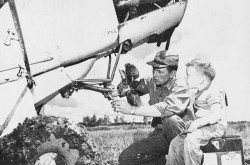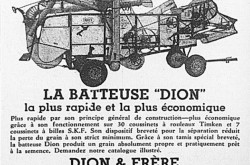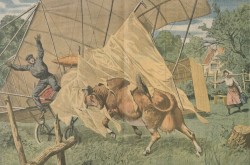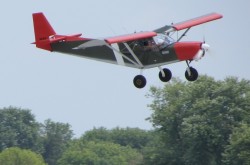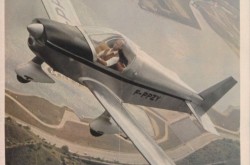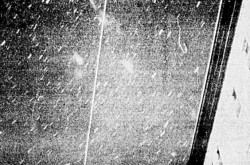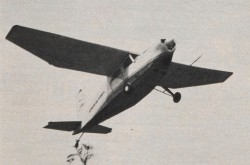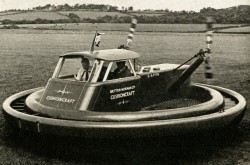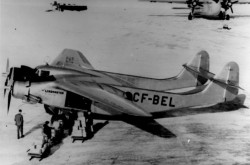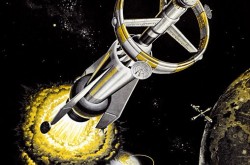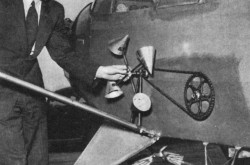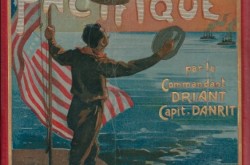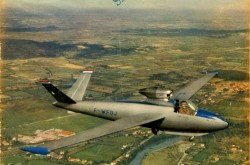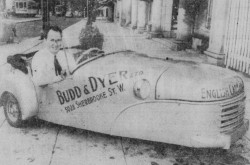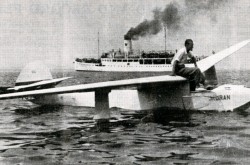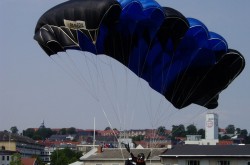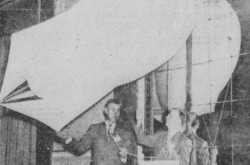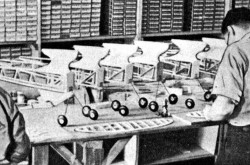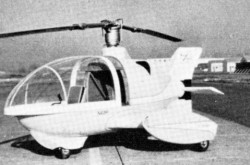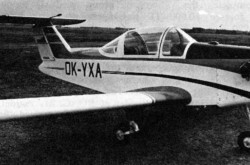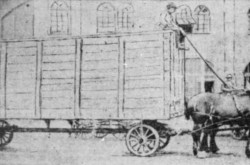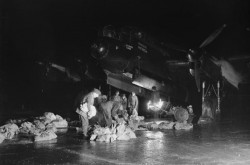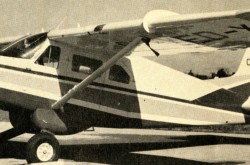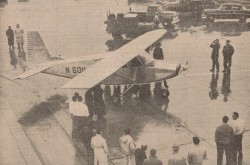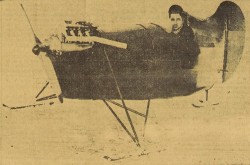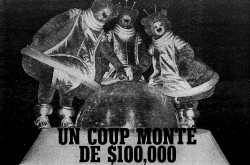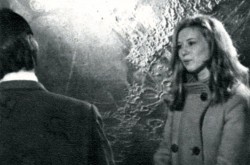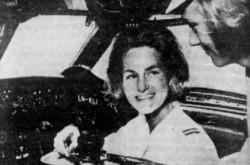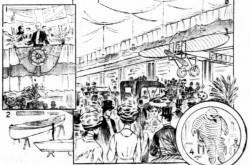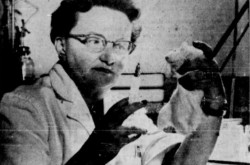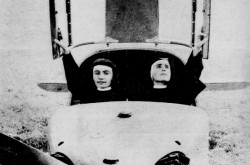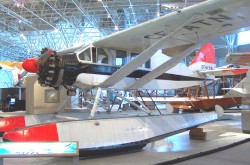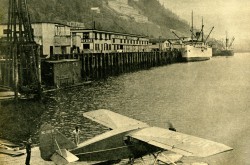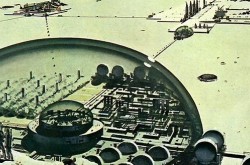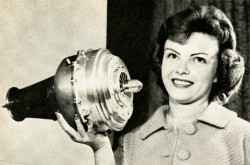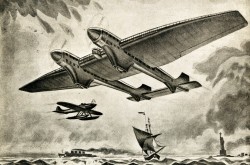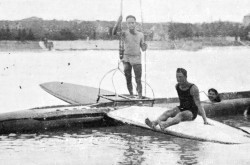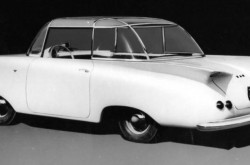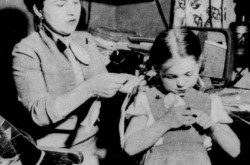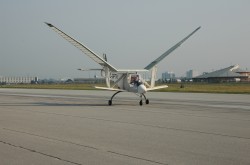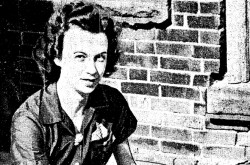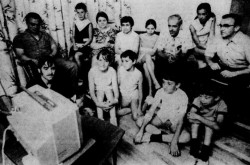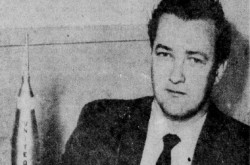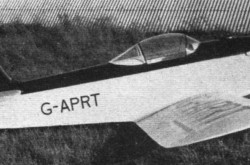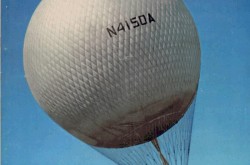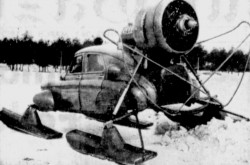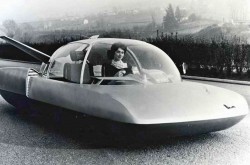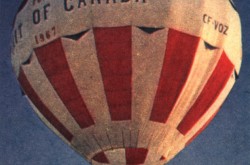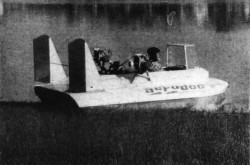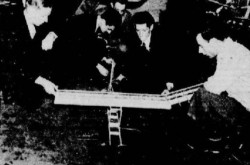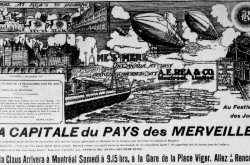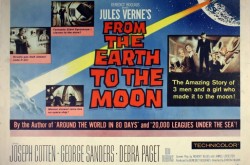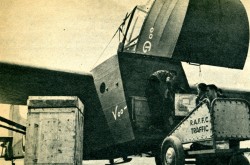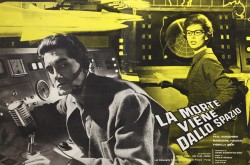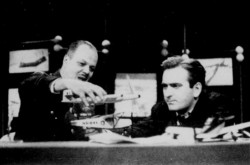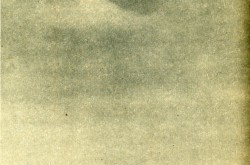The car that was more economical than the streetcar: The New-Map / Rolux Baby microcar

How are you, my dear reading friend? Fear not, this kindness does not hide dark designs. Yours truly plans to be brief in his account of the microcar he discovered in the 14 January 1950 issue of the daily L’Action catholique of Québec, Québec, which is now gone.
Where to start, where to start, where? Come, children of the personland, let us begin at the beginning. Once upon a time, there was a small French firm which produced New-Map motorcycles, and… Yes, yes, French and not American, British or Canadian. I know, I do not understand either. My distant (geographically and chronologically) French cousins do not always show a deep respect towards the language of Molière. My favorite example was / is the expression mastère en management. I kid you not. Mastère en management… Said Molière, born Jean Baptiste Poquelin, must be crying in paradise, but I digress.
Once upon a time, say I, before the small French firm in question, there was a small cycle and toy making workshop founded in 1898 by Joseph Martin whose name still escapes yours truly. Interestingly, at least for me, said workshop made airplane wheels during the First World War. In the early 1920s, very tired by years of hard work, Martin thought seriously about retiring. His son, Paul Martin, an aircraft engine mechanic, said he was ready to take over the family business, which became the Établissements Paul Martin. And yes, my reading friend, this firm still produced airplane wheels. It also made automobile wheels.
Around 1924-25, Martin junior decided to make motorcycles. The idea may have seemed absurd. Indeed, the French motorcycle market was highly saturated following the transfer of a multitude of military vehicles to the civilian market after the end of the First World War and the creation of many small firms by entrepreneurs who believed that the motorcycle had a bright future.
The Établissements Paul Martin marketed its first motorcycle in 1926, under the New-Map brand. This name was inspired both by the anglomania then rife in France (New) and the initials of the founder of the firm (MAP for MArtin Paul). The logo of the firm, in turn, was inspired by the egyptomania then rife in France and elsewhere following the discovery / desecration of the tomb of pharaoh Tutankhamon, born Toutankhaton, by the British archaeologist Howard Carter and his team, in November 1922.
The first New-Map motorcycle was well received. It was so well received that the Établissements Paul Martin offered 7 different models as early as 1927. The firm made the frames of said motorcycles and mounted on them parts, including engines, provided by other firms. If said engines were mainly of French origin, the Établissements Paul Martin did not hesitate to use engines from British and Swiss firms. The British firm in question was none other than J. A. Prestwich & Company Limited, and… That name does not ring a bell, now does it? Sigh. Yours truly had nonetheless examined, very briefly I must admit, the fascinating history of JAP engines in a June 2019 issue of our blog / bulletin / thingee. Anyway, let’s move on.
The Établissements Paul Martin quickly acquired an enviable reputation for the quality of its products. Said reputation helped to fill its coffers. The filling of said coffers allowed it to expand. Even before the end of the 1920s, the acquisition of motorcycle manufacturer Motosacoche France Société anonyme, a subsidiary of a well-known and respected Swiss firm, Motosacoche Société anonyme, added to its prestige – and catalog. In 1929, eager to further enhance the reputation of its motorcycles, the Établissements Paul Martin provided some to racing drivers who participated in several competitions. Said drivers often ranked very high. This being said (typed?), the very quality of the New-Map and Motosacoche motorcycles put them out of reach of potential customers with limited revenues.
A new product made its appearance in 1933: the Baby moped, another example of the anglophilia of the management of the firm. Another new product, the first utility vehicle of the Établissements Paul Martin, followed in 1935: the 3-wheeled cargo bike TM1 or BMA (Bicyclette à Moteur Auxiliaire) whose small engine could be used if a route became too burdensome. A second 3-wheeled cargo bike with a larger payload was introduced in 1938.
That same year, Martin launched a project of a rather different scale. He believed that the automobile market in France was so vast that a well-designed microcar, in other words a small, cheap and reliable vehicle, could carve up a good niche as a principal vehicle for young couples with little money or as a second vehicle for families with a fair amount of money. Although quite spartan when compared to conventional automobiles of the time, the New-Map Baby was almost luxurious when compared to some French microcars of said time. This 2-seat convertible, the pin-up of microcars it was said and one of the first successful French microcars of the 1930s, had a skin made of steel, for example, and not fabric. Yes, yes, fabric.
Would you believe that the Établissements Paul Martin made contact with an American firm to distribute the Baby in the United States?
This being said (typed?), the beginning of the Second World War and, worse still, the French defeat in June 1940 put an end to the career of the Baby. Barely 500 or 600 vehicles were seemingly produced in 1938-40. The Établissements Paul Martin had received an important contract from the Ministère de la Guerre et de la Défense nationale dealing with the production of shell heads. The firm was forced to continue this work after the fall of France. In parallel with this affront to the patriotism of Martin and his staff, the Établissements Paul Martin made a small number of mopeds. A subsidiary of the firm, the Société lyonnaise de tôlerie, also made a small utility vehicle, a mini truck with 3 wheels more precisely, which, given the German occupation and the economic difficulties that resulted from it, did not go beyond the prototype stage.
A reorganization of the Établissements Paul Martin, which occurred in 1940, disturbed its activities. The firm then became the Fabrique lyonnaise de motocyclettes New-Map et Motosacoche Société anonyme. It was the firm’s accountant, Robert Robin, who suggested / imposed this change on Martin. The latter did not realise that this unscrupulous false friend was gradually buying the shares he had distributed to his employees. Once a majority shareholder, Robin took over the position of director of the Fabrique lyonnaise de motocyclettes New-Map et Motosacoche at an indeterminate date. Although devastated by this stab in the back, Martin could not abandon the family firm. He accepted a position of technical advisor.
This craptacular (Hello SB and EP!) treason shocks you, my reading friend? I therefore advise you not to read the next paragraph, which constitutes more or less the maraschino cherry on top of the sundae.
Once France was liberated, in 1944-45, Martin may have been arrested for collaboration with the German occupier. According to some people, Robin had denounced him. If Martin was apparently soon exonerated, he could not regain control of the Fabrique lyonnaise de motocyclettes New-Map et Motosacoche. In 1950, he joined the staff of a small motorcycle manufacturer, the Établissements Monet-Goyon. Martin retired a few years later, perhaps when many of the staff were laid off in 1954. He died in 1979.
And what was the sleazebag… Sorry. And what was Robin up to during this time? He launched the production of new New-Map mopeds in 1945. In 1947, he launched the production of the aforementioned mini truck, then christened Solyto, for SOciété LYonnaise de TOlerie. This spartan and low powered vehicle, which allowed a driver to make deliveries without having to obtain a driver’s license, was very popular with small traders and craftsmen, both in the countryside and in cities. Available in closed and open versions, with a tarpaulin, the Solyto mini truck was a light and handy vehicle which consumed little fuel and had a good autonomy. Another version of Solyto was aimed at camping enthusiasts.
Would you believe that the Solyto was so spartan that it did not have a heating system, a spare wheel, lockable doors or reverse gear? It did, however, have a twine manual starter similar to that of a motorised lawn mower. By the way, the Solyto was available in multiple colors, metal gray, ocean green and… no other colour.
Yours truly unfortunately does not know if the Solyto was made by the Fabrique lyonnaise de motocyclettes New-Map et Motosacoche or the Société lyonnaise de tôlerie, or both.
Although this excellent vehicle was Robin’s top priority, the latter nonetheless decided to relaunch the production of the Baby microcar, and this around 1946-47. Rechristened Rolux Baby, this convertible vehicle went back to the road to take advantage of the return of peace and a new wave of enthusiasm for microcars. It was in fact available with at least 2 types of engines, one of which, the less powerful, allowed a driver to enjoy the pleasures of the road without having to obtain a driver’s license. A closed version presented in 1946 did not go beyond the prototype stage.
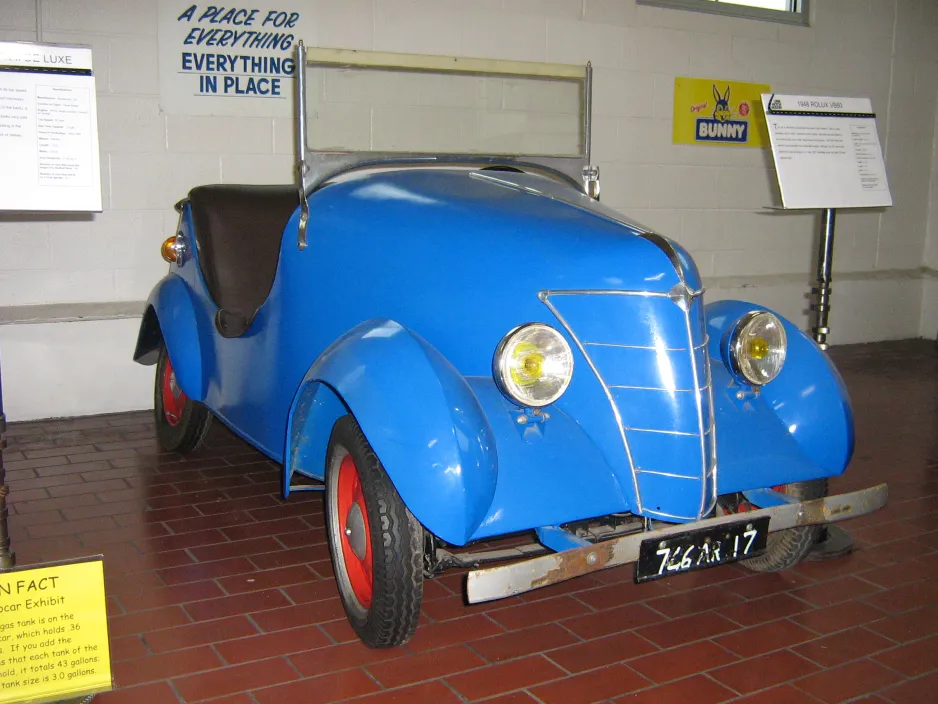
A typical New-Map / Rolux Baby on display at the Lane Motor Museum, Nashville, Tennessee, April 2009. Wikipedia.
Would you believe that the little door on the side of the driver of the Baby was an expensive option that required some reinforcement of the chassis? Yours truly thinks, without being sure, that said door was also available on the pre-war models of the Baby.
Apparently wanting to defraud the French treasury, Robin entrusted the production of the Baby to a brother. I unfortunately do not know the name of the firm headed by said brother. I do not even know if Robin founded said firm for the specific purpose of producing the Baby, but back to our story.
The Baby was unfortunately not the only economical motor vehicle available in France in the late 1940s. The Citroën 2CV and the Renault 4CV, 2 of the most famous vehicles ever produced in France, by the French automobile giants that were the Société anonyme André Citroën and the Régie nationale des usines Renault, were not long in flooding the market.
If you are as good as gold or, more likely, if you are not, yours truly is willing to consider the possibility of pontificating on the 4CV or 2CV, vehicles whose engine produced much more than 4 or 2 horsepower, at a later date of his choice, but back to our story.
As you can well imagine, the Rolux microcar was absolutely no match for giants like the Société anonyme André Citroën and the Régie nationale des usines Renault. Its manufacturer ended production around 1952 after having produced barely about 300 Babys, for a total of about 800 or 900 vehicles. Robin unsuccessfully attempted to sell the production rights of the Baby in 1954.
You will understand that a Baby in good condition was / is / will be a motor vehicle sought after by collectors and automobile museums.
Before I forget it, a Baby was the joy of a teenager named Rainier Louis Henri Maxence Bertrand Grimaldi, the future Prince Rainier III, monarch of the micro state of Monaco, mentioned in another January 2020 issue of our blog / bulletin / thingee.
As the production of the Baby came to an end, Robin launched the production of new New-Map motorcycles. These apparently sold well enough but the brand was not able to regain the prestige it had before the Second World War. Robin also launched the production of scooters, in 1957. Sales being rather weak, this line of product did not take long to be eliminated. Noting the growing interest in mopeds, Robin launched the production of this type of vehicle. New-Map mopeds arrived too late on the market, however. Few were sold. In fact, sales of motorcycles, scooters and mopeds were so disappointing that the firm stopped making them in 1959. I wish I could give you its name at the time but I am driving in a fog. Sorry.
Robin then moved his stuff in the premises occupied by the Société lyonnaise de tôlerie. He oversaw the production of the Solyto and of a 3-wheeled cargo bike derived from the aforementioned TM1. It goes without saying that sales of the former kept Robin in business.
The foreman having left his position to start his own firm, Robin hired a local agent of New-Map brand products named Joseph Spalek. The latter was immediately confronted with a perfect storm.
The factory being expropriated, he had to oversee the transfer of the Solyto assembly line to new premises constructed for this purpose.
The maker of the Solyto’s engine having filed for bankruptcy, Spalek had to find another supplier. He then discovered that there were virtually no maker of small gasoline engines for road vehicles left in France. Forced to fall back on a boat engine, Spalek was forced to design a gearbox, and this in a very short time. And this was how the Solyto became the first motor vehicle with an automatic variable speed drive marketed in France.
The maker of the Solyto’s new engine having closed its doors in the early 1960s, Spalek decided to design one. He achieved this feat in less than 100 days, using a few Gnome & Rhone brand engine parts produced by the motorcycle branch of the Société nationale d’études et de construction de moteurs d’aviation (SNECMA), a firm mentioned in a July 2018 issue of our blog / bulletin / thingee. Spalek even allowed himself the luxury of designing an electric starter for the Solyto.
Did I mention that Spalek was not an engineer? He was an autodidact who had learned on the job.
The sales of the aforementioned 3-wheeled cargo bike and Solyto not allowing his firm to make ends meet, Robin diversified its activities. He oversaw the licensed manufacture of sheet metal parts, for example, including telephone cabinets for Équipements électriques K.V. Société anonyme. The latter quickly became the main client of Robin. When the latter retired, undeservedly if I may say so, in 1963, the director of Équipements électriques K.V. bought back his shares and became the largest shareholder of the firm. In fact, the maker of the Solyto became for all intents and purposes a subsidiary of Équipements électriques K.V.
From then on, said firm made the Solyto, which was soon rechristened TC-8. Spalek innovated yet again by equipping this vehicle with an electronic ignition system, an equipment previously used only on Formula 1 racing cars. While it was true that this innovation revived a little bit the sales of the TC-8, it was just as also true that this type of mini truck was becoming less popular. The last of the 4 000 or so Solytos / TC-8s left the factory in February 1974.
Loyal to his post, Spalek had planned the blow. At the beginning of 1970, he completed the prototype of an angular 2-seat microcar that allowed a 16-year-old driver to enjoy the pleasures of the road without having to obtain a driver’s license. The KV Mini 1 having had some success, the firm subsequently produced the KVS Mini 2 and GadJet. The acronym KVS was due to the fact that Spalek had become a (important?) shareholder in 1975.
The period from 1975 to 1980 was a golden age for microcars that could be driven without a license in France. More than 35 firms were born there during this period that followed the 1973 oil crisis. Their clientele consisted mainly of people unfit to pass the driving license test and ex-bikers without an automobile driving license who no longer wanted to drive without a minimum of protection. The microcar market, however, collapsed in France from 1980 onward. Équipements électriques K.V.S. Société anonyme was among the 5 manufacturers that survived the carnage.
The 2 main customer groups for microcars having gradually disappeared in the 1980s, the KVS microcar assembly line ceased production in 1989. Spalek now supervised the production of subcontracted sheet metal parts. His main client ended up buying the workshop. The staff remains in place, however, including Spalek, who became foreman yet again. He retired, deservedly so, in 1998. Spalek may, I repeat may, have been with us at the beginning of 2020.
Would I dare to suggest that the Canada Science and Technology Museum in Ottawa, Ontario, a sister / brother institution of the breathtaking Canada Aviation and Space Museum in Ottawa, could consider the possibility of thinking to buy a Baby, or a Solyto / TC-8, or a Mini / GadJet? I know, I know, these were not / are not motor vehicles of outstanding significance and national importance. I will therefore not dare, and... What do you say, my reading friend? The use of the Baby was never considered on Québec / Canadian soil? Think again, and here lies a tale.
Shortly before mid-January 1950, the president of the Établissements Cotton Incorporée in Québec, Québec, visited the offices of the daily newspaper L’Action catholique. Randall Cotton informed the reporter who was questioning him that he had acquired the sales rights of the Baby (for Québec or Québec?), a news that should have pleased people looking for a safe, inexpensive and fast means of transport. Indeed, a Baby would be displayed in Québec, the city of course, at the latest in the middle of February. Cotton planned to assemble in his workshop the Babys which would be sold throughout Québec, the province of course, through distributors which remained to be identified.
According to Cotton, the Baby was more economical than the streetcar. In fact, said he, it consumed barely 3.1 litres per 100 kilometres (90 miles/Imperial gallon / 75 miles/American gallon) – a gas mileage that seems rather hard to believe.
Cotton was known to motorcycle enthusiasts of the old capital for introducing in the region the motorcycles of the American and Czech firms Whizzer Motor Company and Moto Jawa Národni Podnik. In fact, some called him the King of the Whizzer.
Dare I pontificate on these firms and their products, my reading friend? The look on your face being worth 1 000 words, I will limit myself to pointing out that the Czech firm played a much bigger role in the history of the motorcycle, but back to our story.
Building on his success with the Whizzer and Jawa motorcycles, Cotton now wanted to move into automobile distribution. Automobiles plural. Indeed, the businessman wanted to distribute more than one type of automobile. The Baby was aimed at small budgets, for example. The Škoda and Tatra automobiles produced by the Czech state-owned firms Automobilové Závody Národni Podnik (AZNP) and Tatra Národni Podnik, on the other hand, were aimed at wealthier people.
In fact, 2 Czech automobiles, a Škoda 1102 and a Tatra 600 Tatraplan, were to share the spotlight at the automobile show Cotton was organising in Québec, which would be attended by the Baby mentioned above.
With or without your permission, my reading friend who is sometimes a bit of a pain, I intend to digress for a few seconds. The Tatraplan luxury family automobile was / is a vehicle that deserved / deserves it.

A typical Tatra 600 Tatraplan luxury family automobile, France, August 2006. Wikipedia.
Designed in 1946-47, this curvaceous automobile was the first new model produced after the nationalisation of the firm, in 1946. Its name recalls both the planned economy put forward by the pro-Soviet government set up, by force, in 1948, by the Union of Soviet Socialist Republics, and the aerodynamic shape of the vehicle, inspired somewhat by that of an airplane / aeroplane.
The first series Tatraplan left the factory in 1948. In 1951, however, the government ordered that the assembly line be moved to an AZNP workshop so that Tatra limited its efforts to truck production. This decision raised such an outcry in the shops of the 2 firms that production of the Tatraplan ended in 1952. Fewer than 6 350 vehicles of this type were produced, including about 2 100 by AZNP.
You will remember that AZNP was mentioned in a March 2019 issue of our blog / bulletin / thingee, but back to the Baby.
A microcar of this type was presented for the first time in Montréal, Québec, on the premises of the Hôtel Mont-Royal, in early March 1950. A photographer working for the Montreal daily Le Canada photographed the commercial attaché at the French consulate, Gérard Dubois, at the controls of said Baby. This microcar was in fact one of the main elements of an exhibition of sporting goods and automobiles organised by Cotton. A Škoda 1102 and a Tatraplan shared the spotlight with it.
A Baby may, I repeat may, have been present in Montréal, around the same time, or a little later, in the premises of an automobile sales firm, Snowdon Motor Sales Company Limited, and / or in the exhibition room of an unidentified building.
Indeed, some Baby, Škoda 1102 and Tatraplan appeared to be presented to residents of a few Canadian and American cities during 1950.
Interestingly enough, the money paid by Canadians buying a Škoda 1102 or Tatraplan apparently remained in Canada. About 60% of this dough was used to pay the Czech government’s debt to Canada and the rest was used to pay for Canadian products exported to Czechoslovakia.
If yours truly may be allowed a comment, I have the impression that the number of Babys, Škoda 1102s or Tatraplans sold in Québec / Canada was not very high.
And I think that’s it for today. See ya later, alligator.
And what the heck, here is a pretty photograph.
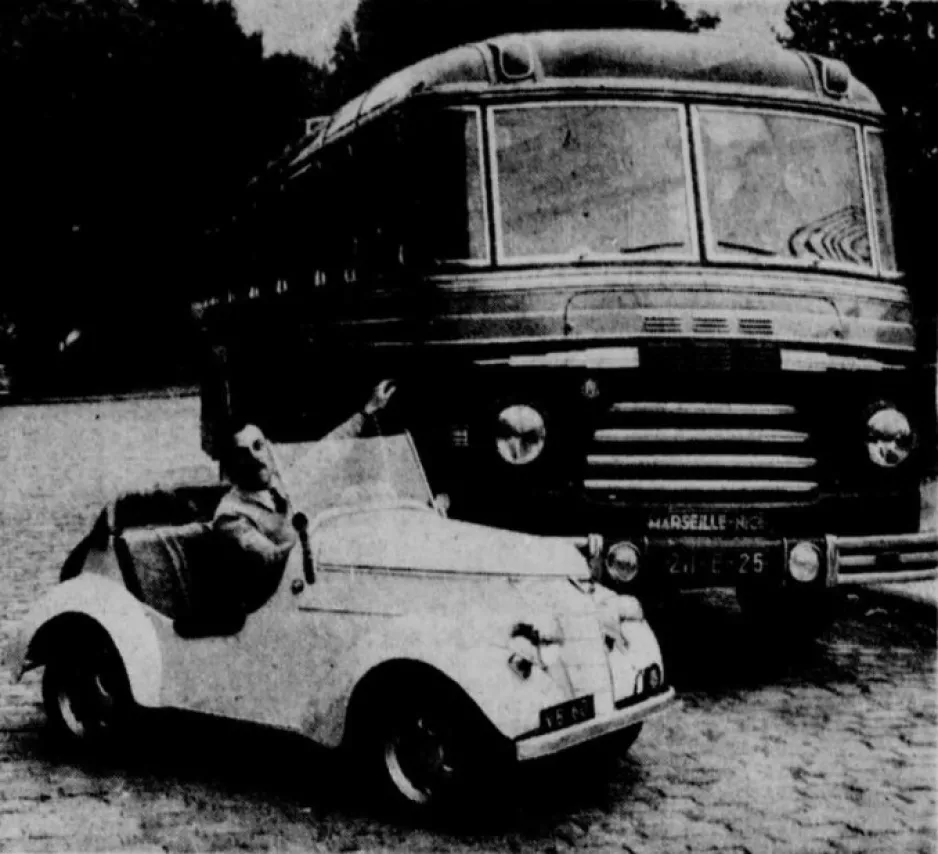
The New-Map / Rolux Baby microcar presented at the 1950 edition of the Salon de l’automobile de Paris. Anon., « Le nouveau ‘Rolux’ de 300 livres. » L’Action catholique, 11 October 1950, 1.


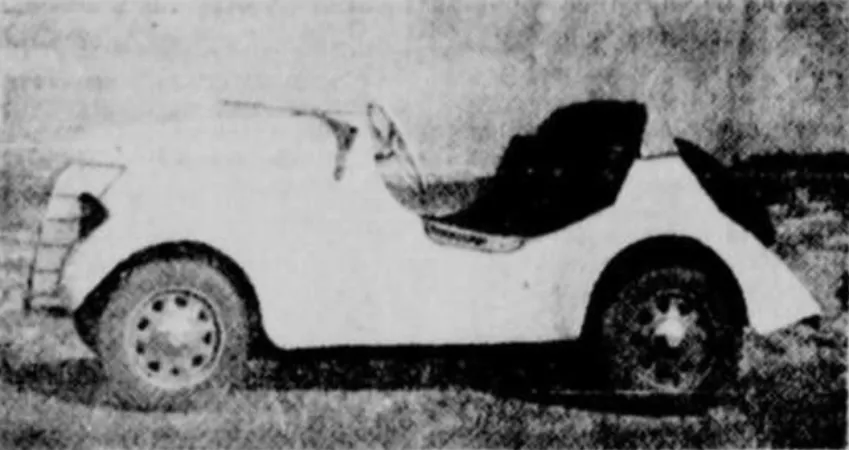












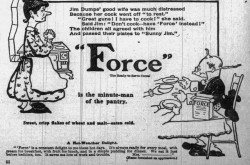
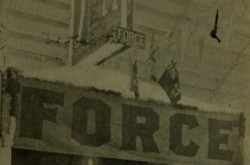
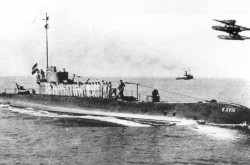
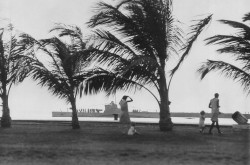
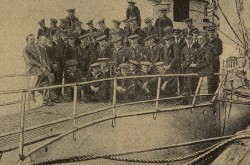
![A block of photographs showing some of the people involved in the bombing of beluga whales in the estuary and gulf of the St. Lawrence River. Anon., “La chasse aux marsouins [sic]. » Le Devoir, 15 August 1929, 6.](/sites/default/files/styles/thumbnail_7/public/2024-09/Le%20Devoir%2015%20aout%201929%20page%206.jpg?h=584f1d27&itok=TppdLItg)
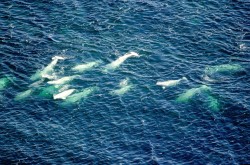
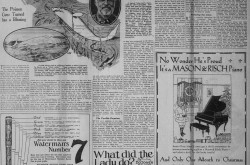

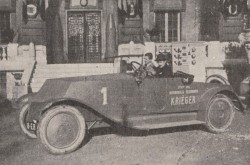
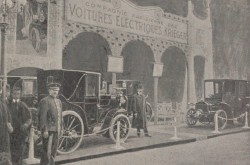
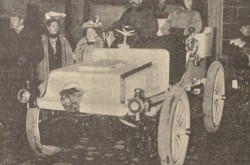
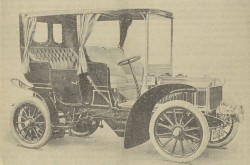

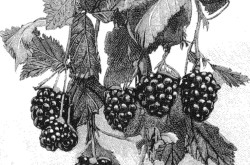
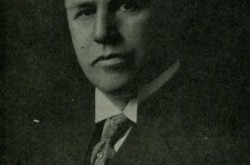
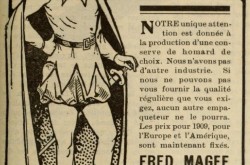
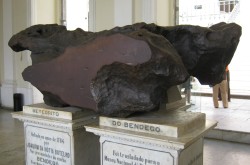
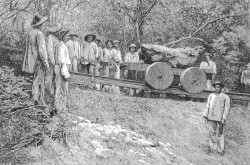
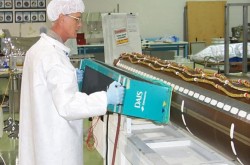

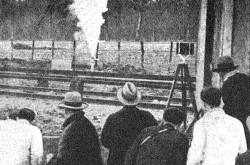
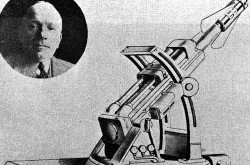
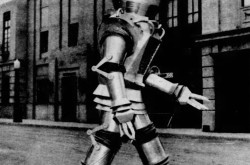

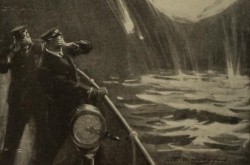
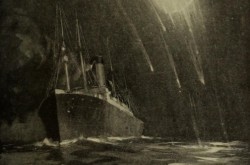
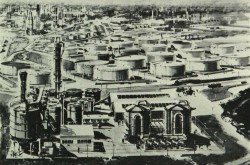

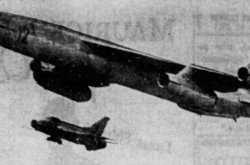
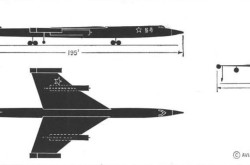
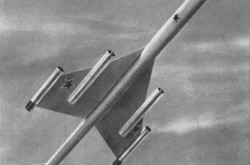
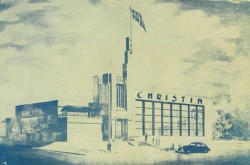
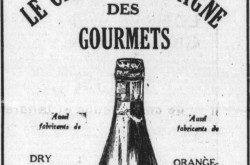
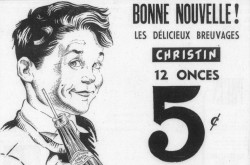
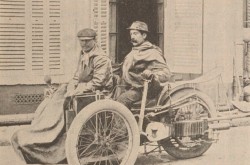
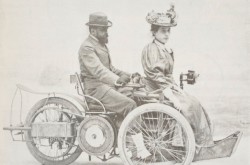
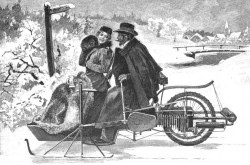
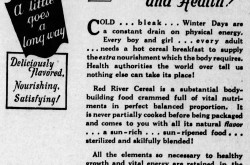

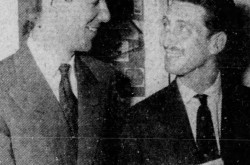
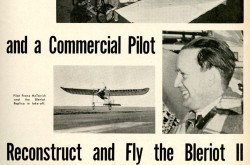
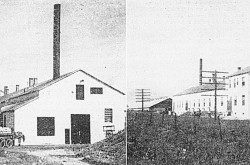
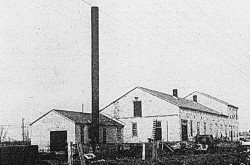



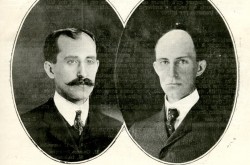

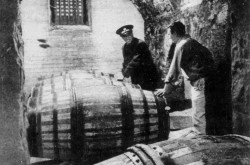
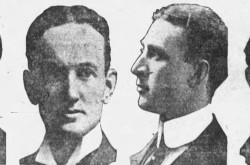
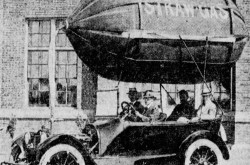
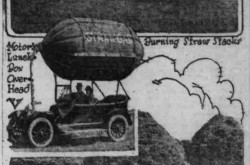
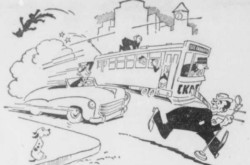

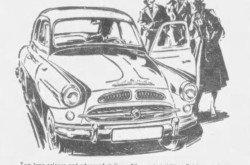
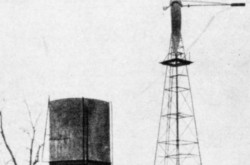
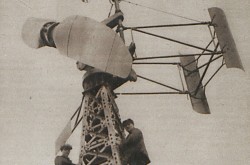
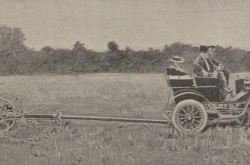

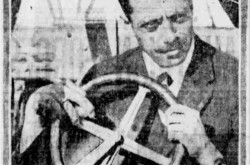
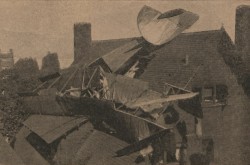
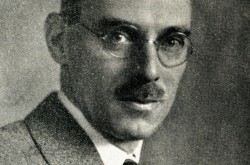
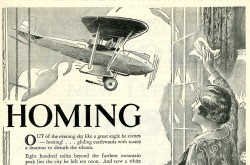
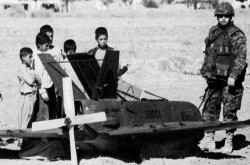
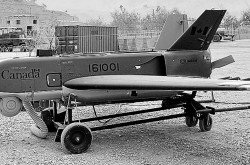
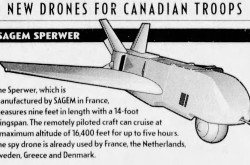
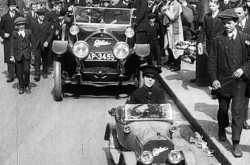
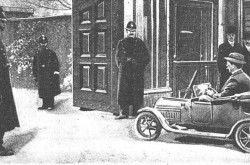
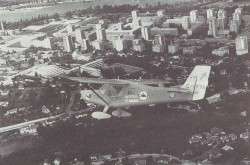
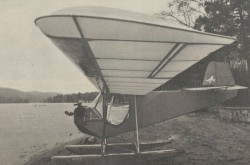

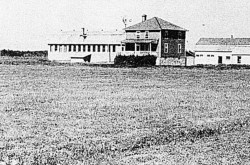
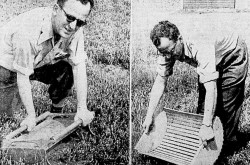
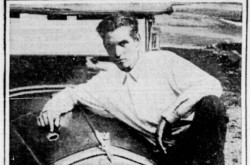
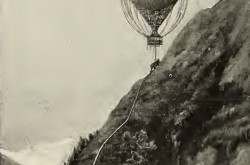
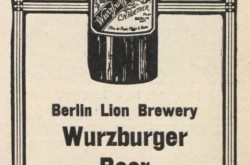

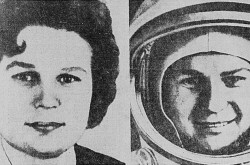
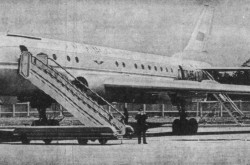
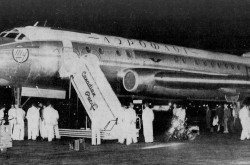
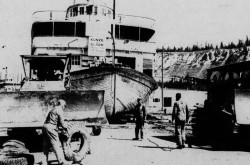
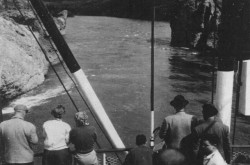
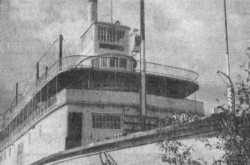
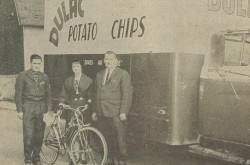
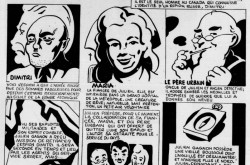
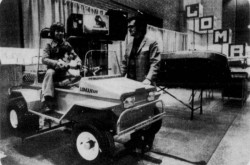
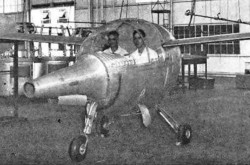
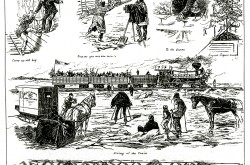
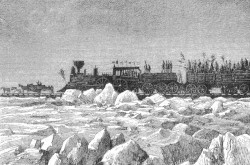
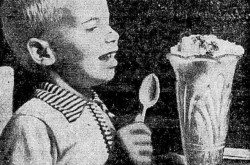
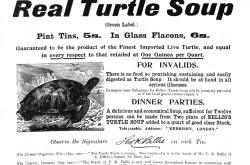
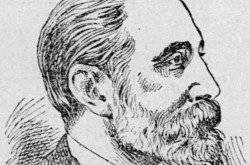
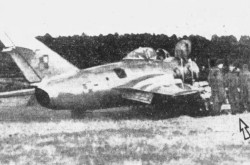
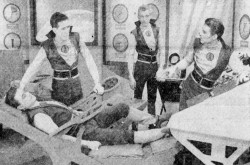
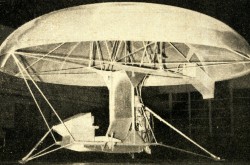
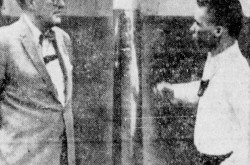
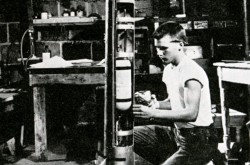
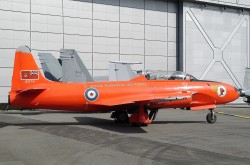
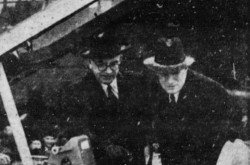
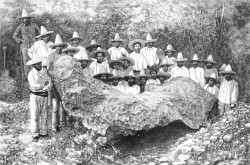
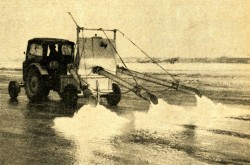
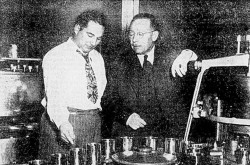
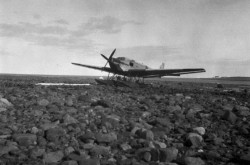
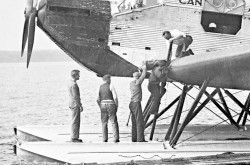
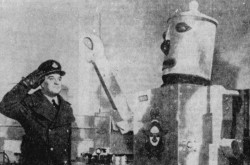
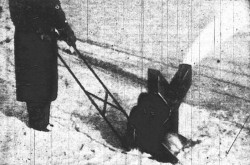
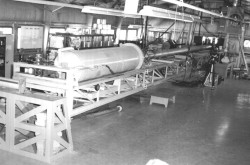
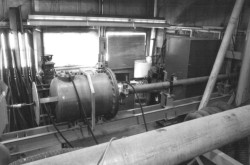
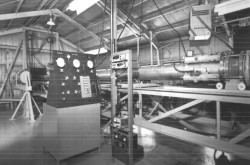
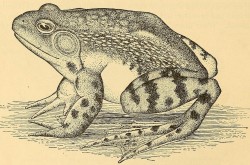
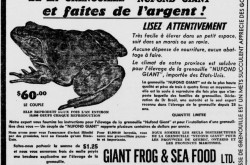
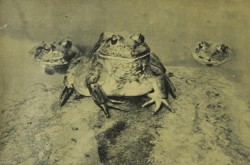
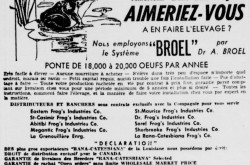
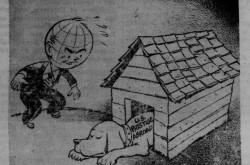
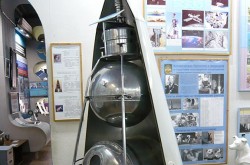
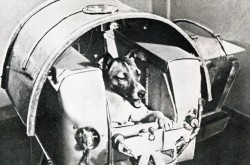
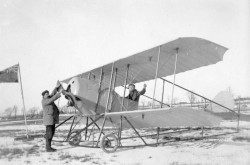
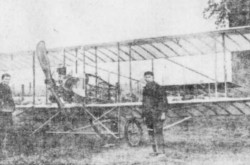
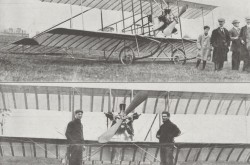
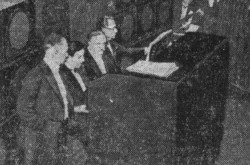
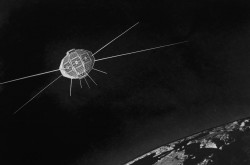
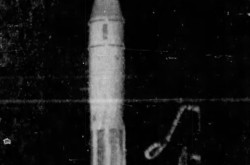
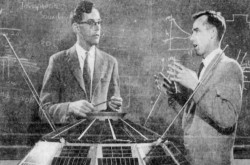
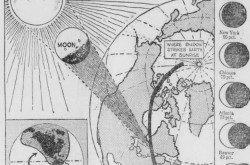



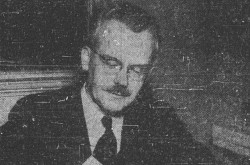
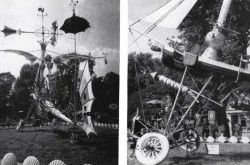
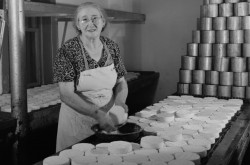
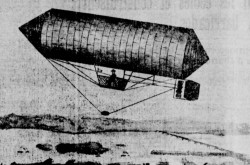
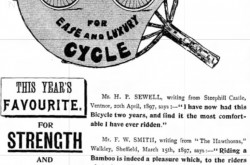
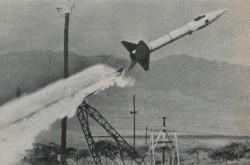
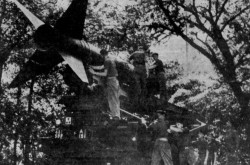
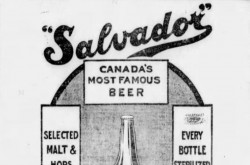

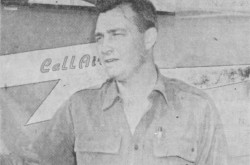
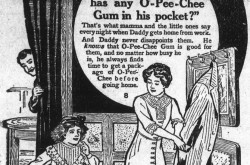
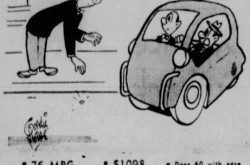
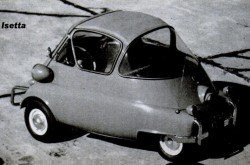
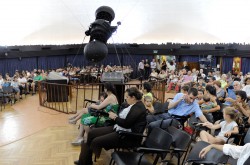
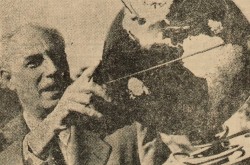
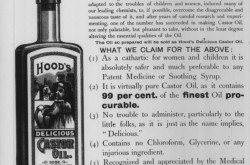
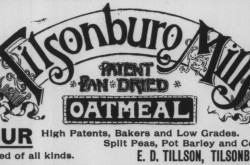
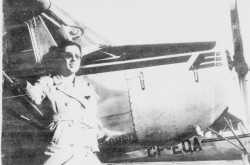
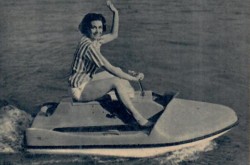

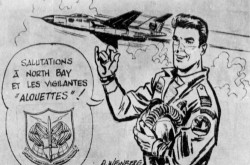
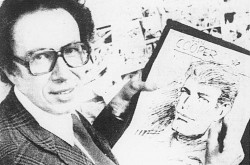
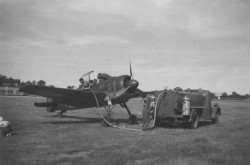

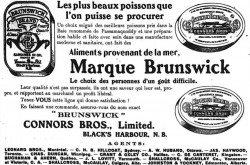


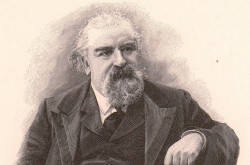
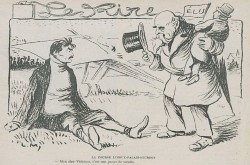
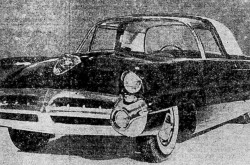
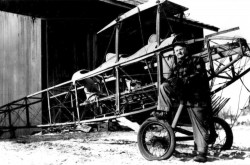
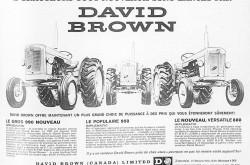
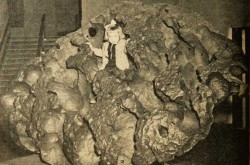
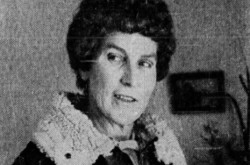
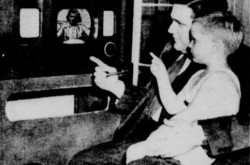
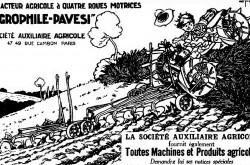
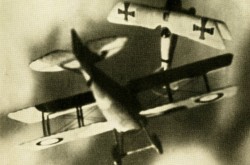
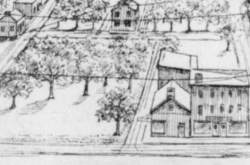
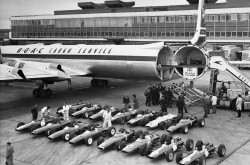
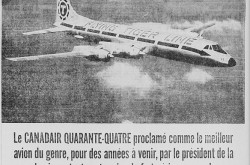
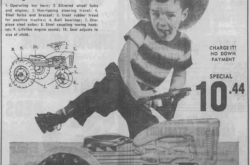
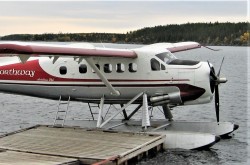
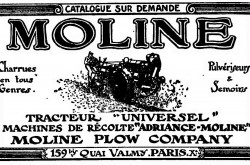
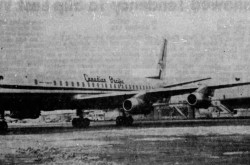
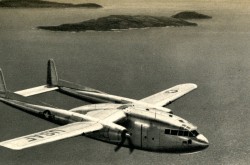
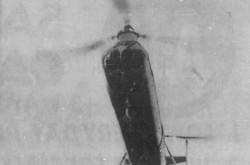

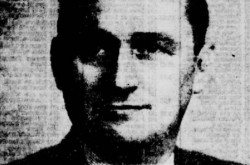
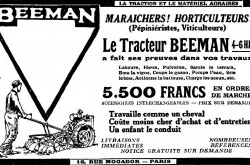
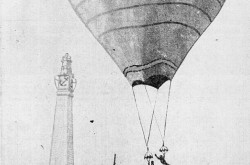

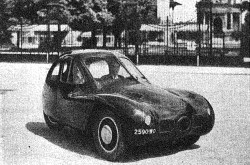
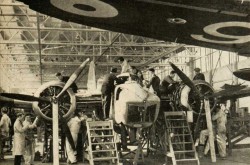
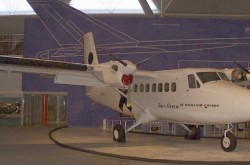
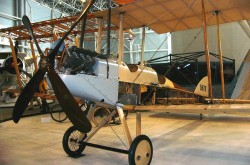
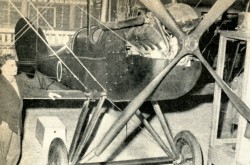

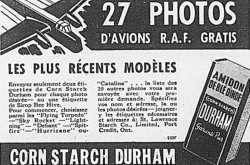

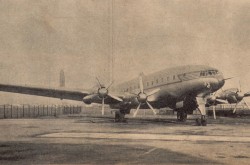
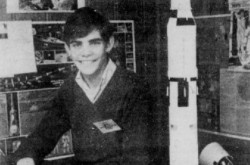
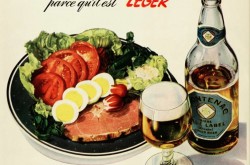
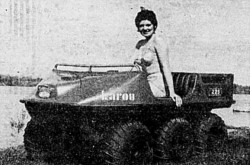
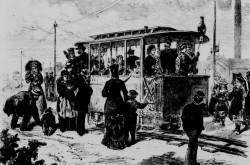
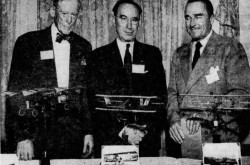
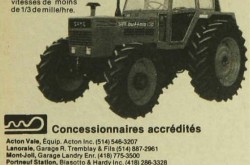
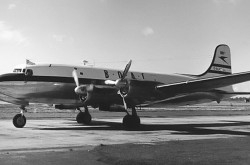
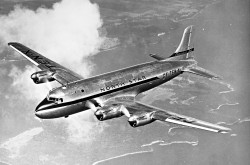
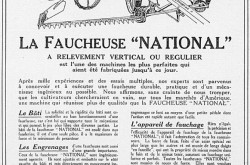
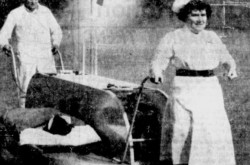
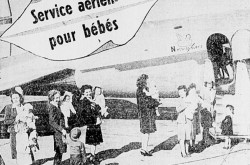
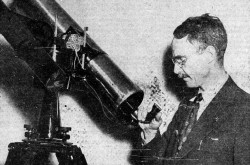
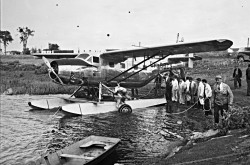
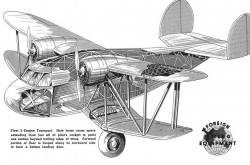
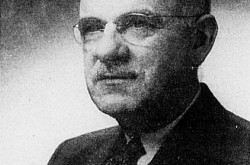
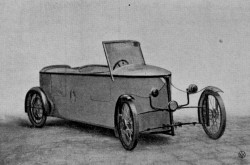
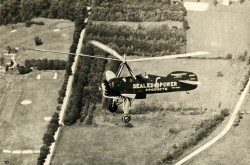
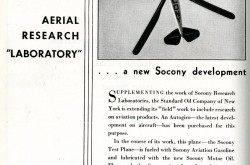
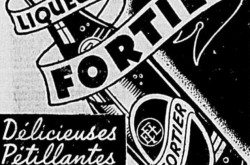
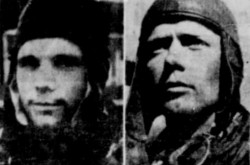
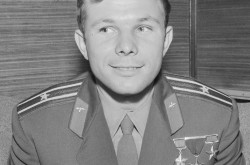
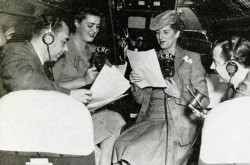
![Peter Müller at the controls [sic] of the Pedroplan, Berlin, Germany, March 1931. Anon., “Cologne contre Marseille – Le mystère du ‘Pédroplan.’ [sic]” Les Ailes, 2 April 1931, 14.](/sites/default/files/styles/thumbnail_7/public/2021-04/Les%20Ailes%202%20avril%201931%20version%20big.jpg?h=eafd0ed4&itok=WnBZ5gMf)
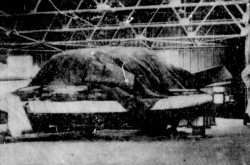
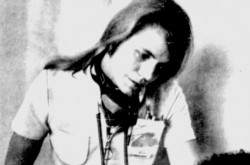
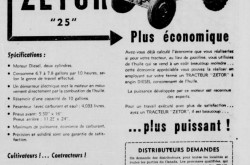
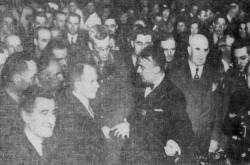
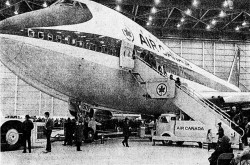
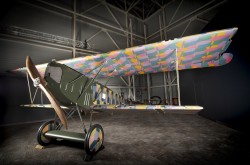
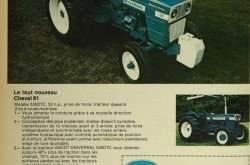
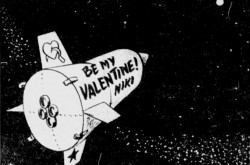
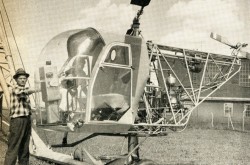

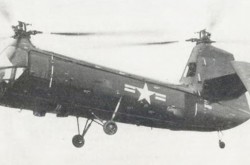
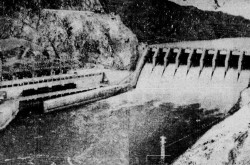
![One of the first de Havilland Canada Chipmunk imported to the United Kingdom. Anon., “De Havilland [Canada] DHC-1 ‘Chipmunk.’” Aviation Magazine, 1 January 1951, cover.](/sites/default/files/styles/thumbnail_7/public/2021-01/Aviation%20magazine%201er%20janvier%201951%20version%202.jpg?h=2f876e0f&itok=DM4JHe5C)
